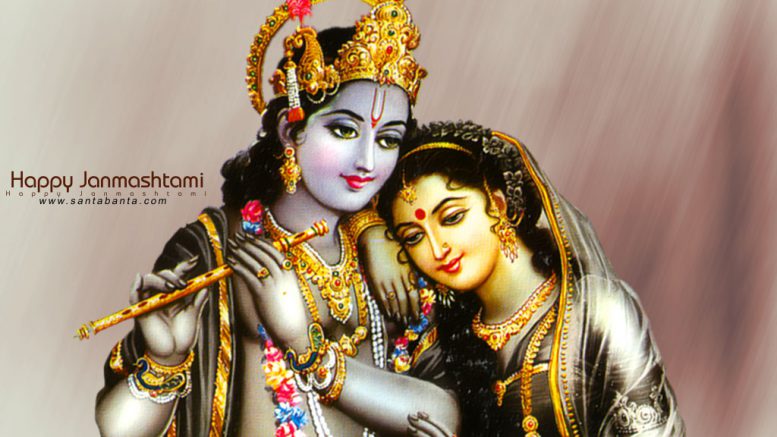Hindus across India and abroad are gearing up for one of their most significant festivals – Janmasthami. This year Janmasthmi would be celebrated on 14th August. Janmashtami marks the birth of Lord Krishna. It is said that Lord Krishna was born at midnight on the ‘eighth day’ or the ‘Ashtami’ of the holy month, Shravana, according to the Hindu Lunar calendar . The legend behind Lord Krishna’s birth, and his triumph over enemies, makes for one of Hindu folklore’s most loved tales, and is recited amongst the devotees with much fervor on Janmashtami. On the pious occasion devotees throng temples to offer their prayers and bhog to their beloved deity. There is also a common practice followed in most Indian household, of bathing ‘Nand Gopal’ (baby Krishna) with milk, honey and water, and dress him up in new clothes. Devotees also observe the ritualistic fasts on the holy occasion.
Significance of Janmashtami
The Kingdom of Mathura was under deep peril and misery under the rule of King Kansa. The merciless king had a sister known as Princess Devaki, whom he loved dearly. He married his little sister to Vasudeva with much splendor and magnificence, when suddenly the cloud roared with a prophecy that the eight son of Devaki and Vasudev would be the cause of his death. The merciless king took over the loving brother and he immediately threw Devaki and Vasudev into the prison or ‘Karaghar’.
The cruel king went on to kill all the six children that Devaki had borne in all those years. However, the seventh child who was informed to be miscarried was mystically transferred to the womb of Princess Rohini in Vrindavan who grew up to become Balram, the elder brother of Lord Krishna. During the birth of Lord Krishna, Vasudev was guided by the Gods and carried the baby to Vrindavan to the house of Nanda and Yasoda. It was a night of frightening thunderstorm and heavy downpour. But Vasudev kept walking with Krishna atop of his head in a basket, braving the storm and the choppy river.
To protect Krishna, Shesh Nag (the Snake God) also quietly rose from behind to cover his lord from the rains, as Vasudeva made his way. When he reached Nanda’s place, Vasudeva kept his son and returned with their girl child born on the same day to present her to King Kansa in the hope that he wouldn’t harm her because the prophecy had said that the eight ‘son’ would be the one to kill him. But the merciless Kansa held the child and tried to throw her against a rock when she rose to the air taking the form of Goddess Durga, warning him about his death. And sure enough, years later, Krishna took the life of Kansa and Mathura was reinstated as a happy kingdom once again.
The Janmashtami Fast, Bhog and Pooja Rituals
Devotees of Lord Krishna observe a ritualistic fast during his birth anniversary. Devotees eat only a single meal a day before Janmashtami. On the fasting day, devotees take a Sankalpa to observe a day long fast and to break it on the next day when the Ashtami Tithi is over. They perform the Krishna Abhishekam, with milk, ghee and water, and proceed to offer ‘bhog’ to the God. Through the day of fasting no grains are consumed, the devotees take a meal containing fruits and water, called ‘Phallar‘.
The Chappan Bhog
As a common practice, after sundown, they recite hymns and sing bhajans in the name of the Lord and break their fast only after midnight. The following day, which is referred to as ‘Nanda Utsav’, as an offering to the Lord, devotees put together a list of 56 food items, which is referred to as the ‘Chappan Bhog’. This is later distributed among the people after the fast. As legend goes, it constitutes Krishna’s favourite dishes and usually includes cereals, fruits, dry fruits, sweets, drinks, namkeen and pickles in quantities of eight under each category. Some of the common items which are found in the bhog are makhan mishri, kheer, rasgulla, jalebi, rabri, mathri, malpua, mohanbhog, chutney, murabba, saag, dahi, Khichadi, tikkis, milk, cashews etc.
Date and Mahurat of Janmashtami Pooja and Fasting
This year Janmasthami falls on 14th August, according to Smarta Sampradaya. The followers of Vaishanava Sampradaya would be following it on the 15th August. The time to perform Krishna Pooja is during Nishita Kala, which is the midnight as per Vedic time-keeping. For those observing the fast, the time to break the fast is called the Parana which is at 5:39 p.m on 15th August. For the followers of Vaishnava Sampradaya, Janmashtami would be celebrated on the 15th and their ‘Parana‘ time is 5:54 a.m.
Nishita Puja Time: 12:03 a.m to 12:47 a.m
The mid night moment of the Nishita phase is : 12:25 a.m.
On 15th, The Parana Time: After 5:39 p.m
Ashtami Tithi End Time = 5:39 p.m.

Be the first to comment on "Janmashtami 2017: Significance of the Festival, Date, Time, Mahurat and Pooja Rituals"